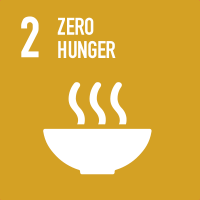Studying at the University of Verona
Here you can find information on the organisational aspects of the Programme, lecture timetables, learning activities and useful contact details for your time at the University, from enrolment to graduation.
Study Plan
This information is intended exclusively for students already enrolled in this course.If you are a new student interested in enrolling, you can find information about the course of study on the course page:
Laurea in Servizi giuridici per imprese, amministrazioni e no-profit - Enrollment from 2025/2026The Study Plan includes all modules, teaching and learning activities that each student will need to undertake during their time at the University.
Please select your Study Plan based on your enrollment year.
1° Year
| Modules | Credits | TAF | SSD |
|---|
2° Year It will be activated in the A.Y. 2025/2026
| Modules | Credits | TAF | SSD |
|---|
1 module between the following1 module between the following3° Year It will be activated in the A.Y. 2026/2027
| Modules | Credits | TAF | SSD |
|---|
3 modules among the following| Modules | Credits | TAF | SSD |
|---|
| Modules | Credits | TAF | SSD |
|---|
1 module between the following1 module between the following| Modules | Credits | TAF | SSD |
|---|
3 modules among the following| Modules | Credits | TAF | SSD |
|---|
Legend | Type of training activity (TTA)
TAF (Type of Educational Activity) All courses and activities are classified into different types of educational activities, indicated by a letter.
Principles of economics (2024/2025)
Teaching code
4S00328
Teacher
Coordinator
Credits
6
Language
Italian
Scientific Disciplinary Sector (SSD)
SECS-P/01 - ECONOMICS
Period
2° periodo lezioni (2B) dal Apr 4, 2025 al May 24, 2025.
Courses Single
Authorized
Learning objectives
The course is intended to provide the student with the knowledge of the basic mechanisms of market functioning (micro perspective) and of the economic system of a country as a whole (macro perspective)
At the end of the course, the student will be able to elaborate on issues concerning: as for the micro level, the functioning of competition and public policies aimed at restoring market efficiency and improving the well-being of individuals; as for the macro level, fiscal and monetary policies. The student will be able to identify practical solutions, develop proper reasoning and argumentation, using both an appropriate and specific vocabulary, and a method based on continuous learning and knowledge updating.
Prerequisites and basic notions
No prior classes are required
Program
Economics studies the optimal allocation of scarce resources. The course studies how this allocation occurs, following both a micro approach, focused on the functioning of individual markets, and a macro approach, where interest shifts to the determinants of economic aggregates such as inflation, GDP, unemployment.
A. Presentation of the course
1. Political economy and economic policy
2. Credibility revolution in economic sciences
B. Micro
3. Demand, supply and markets
4. Markets, efficiency, well-being and economic policy
5. Externalities
6. Public goods
7. Market failures
8. Labor markets
C. Macro
9. National accounting and inflation
10. Unemployment
11. Supply and demand of money
12. Monetary and fiscal policy: The IS-LM model.
13. Interdependence and benefits of exchange
The course material (slides, exercises, additional readings) is available on the Moodle platform.
Bibliography
Didactic methods
In-presence lectures. The course includes 12 hours of “Virtual laboratory of political economy”. During these hours the students will have the opportunity to practice, with the support of the teacher, on the topics developed in the classroom.
Learning assessment procedures
The exam is only in written form with multiple-choice questions (theory and / or exercises). Some questions require providing arguments, to develop using the tools analyzed in the classroom, to support the answer. The exam text is the same for all students, regardless of their attendance in the classroom.
Evaluation criteria
The exam aims to ascertain knowledge of the topics in the course program and the ability to apply the concepts to the various problems proposed. The exam covers all topics in the syllabus that have been addressed in class.
Criteria for the composition of the final grade
The exam is made of 22 multiple-choice questions, graded 1.5 points each if the correct answer is provided and -0.5 points if the wrong answer is provided (expected grade per question is zero). Correct answers with missing or wrong argumentation (where requested) achieve a zero score. The exam grade is the sum of the score in each of the 22 questions and is expressed on a scale of 30. The exam is passed with a score >=17.5. The maximum grade (30 e lode) is obtained with an exam score >=30.5.
Exam language
Italiano




